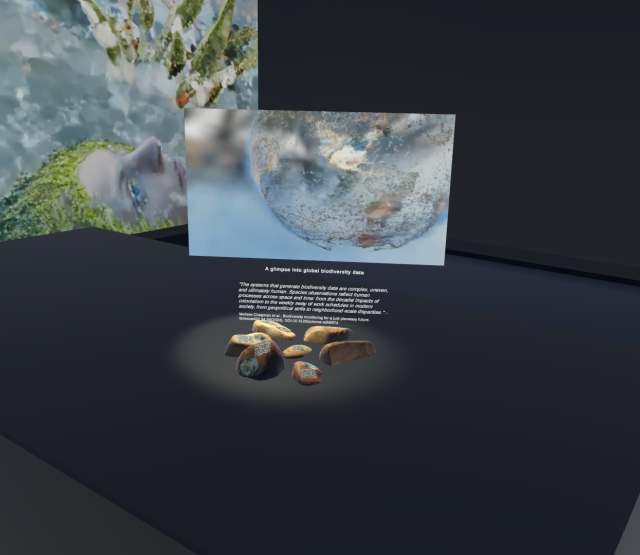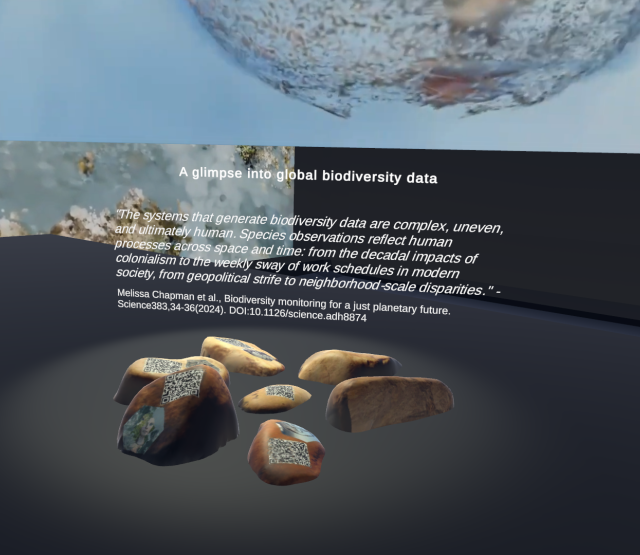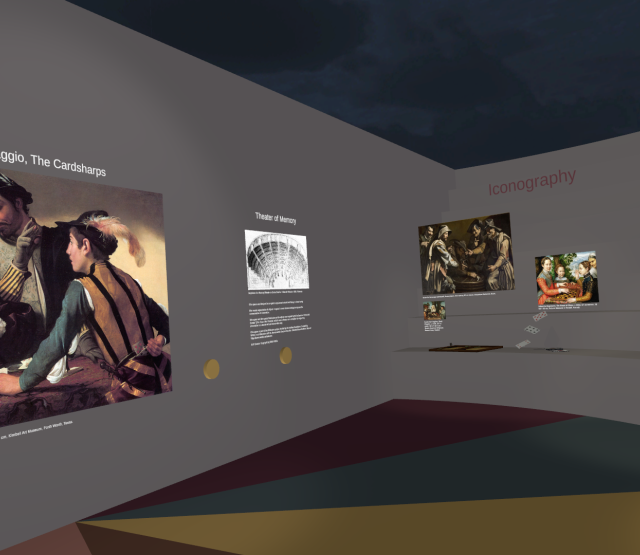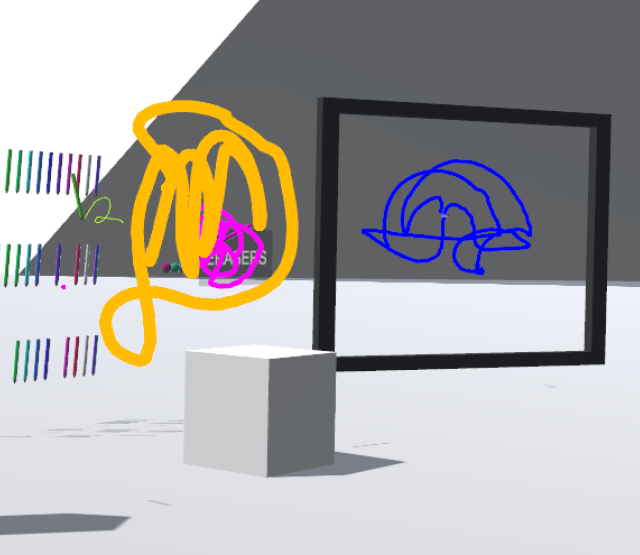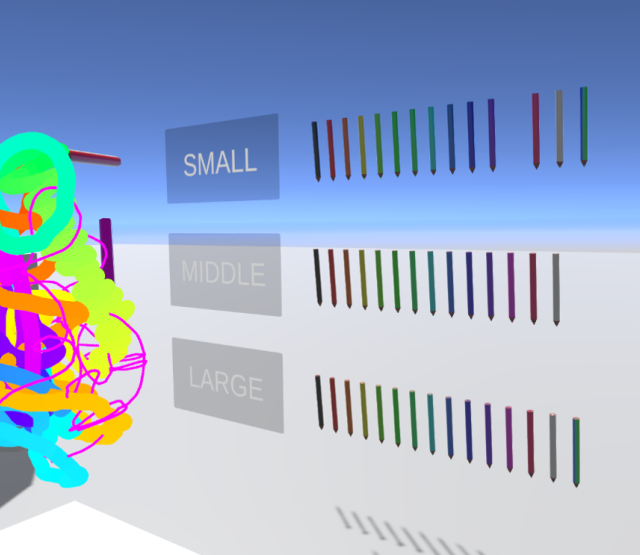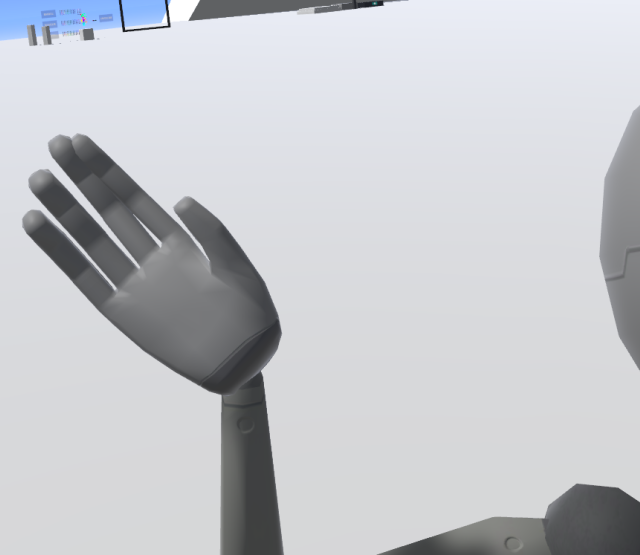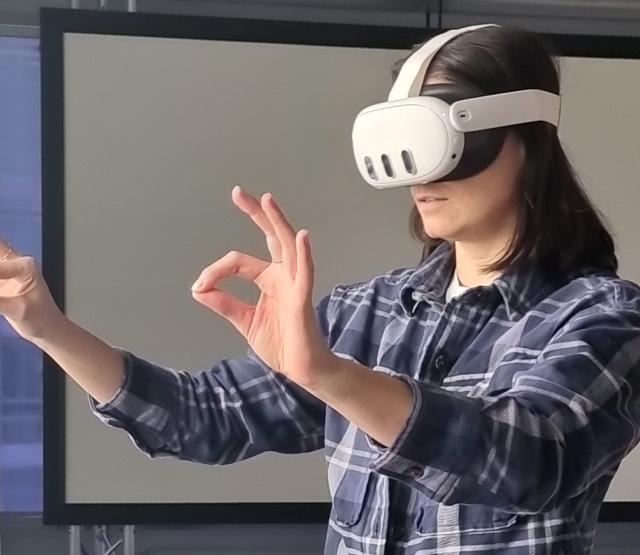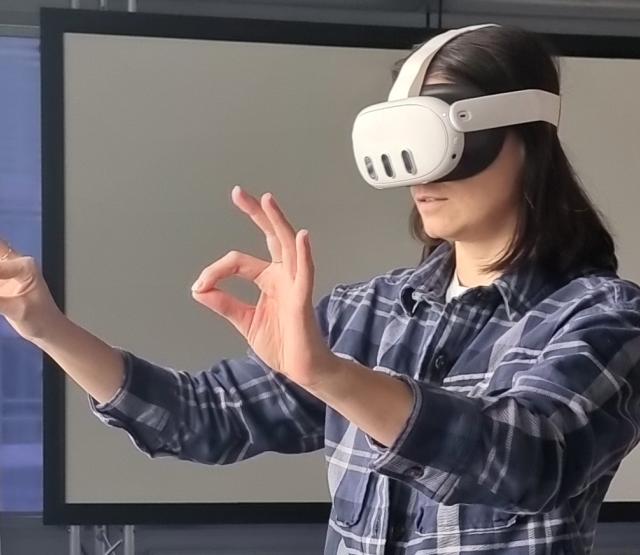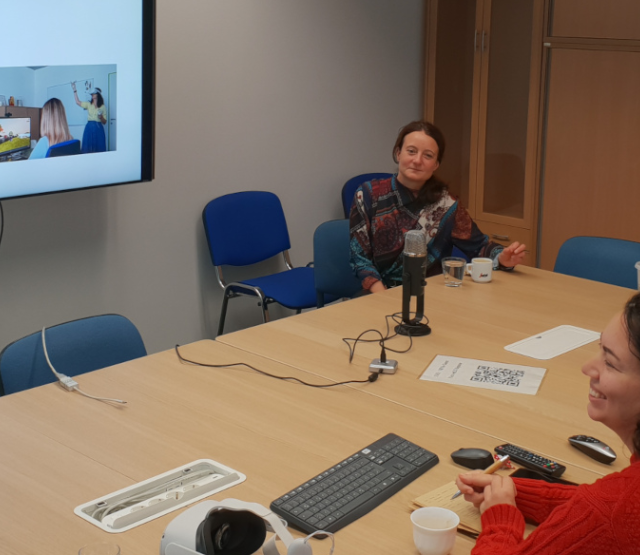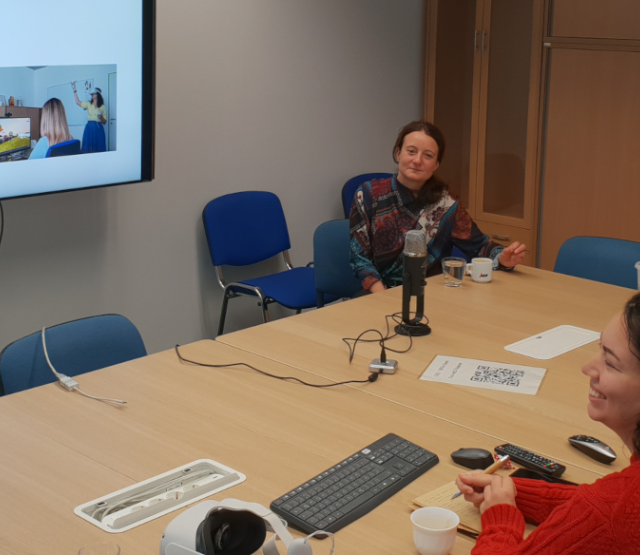
Förderjahr 2023 / Projekt Call #18 / ProjektID: 6899 / Projekt: ARTverse
In the teaching environment developed for the ARTverse project we present a concept of how to use spatial elements and interaction design as a medium for teaching art history.
An Art History Course in Virtual Reality
In the teaching environment developed for the ARTverse project we present a concept of how to use spatial elements and interaction design as a medium for teaching art history. This space was developed in close collaboration with the art historian and researcher Temenuzhka Dimova from the Laboratory for Cognitive Research in Art History (CReA) from the University of Vienna.
Background: Spaces of Memory
Spaces of Memory, also known as the Method of Loci, is a powerful memorization technique that associates information with specific physical locations in a familiar environment. This technique dates back to ancient Greece, where orators used it to remember long speeches. To use it, one visualizes a familiar space, such as a house or a path, and mentally "places" pieces of information at different locations within that space. When recalling the information, the person mentally "walks" through the environment, retrieving the stored details from each designated location. This method is widely used by memory champions and can be applied to learning speeches, studying for exams, or even recalling daily tasks.
Spaces of Memory in Virtual Reality
Recent studies suggest that VR is a promising platform for implementing the Method of Loci(MoL)( see 1, 2,3, 4). To be effective the design of these virtual spaces of memory should take into account that:
- Immersion Enhances Memory: Higher levels of immersion in VR environments lead to better engagement with the MoL and improved recall accuracy.
- Spatial Context is Crucial: Explicitly associating memory items with specific locations within a VR environment strengthens memory retention.
- User Abilities Matter: Individuals with strong spatial reasoning skills tend to benefit more from VR-based MoL techniques.
- Optimized Design Improves Outcomes: Carefully designed VR memory palaces that consider immersion, spatial context, and user interaction can significantly enhance memory performance with minimal training.
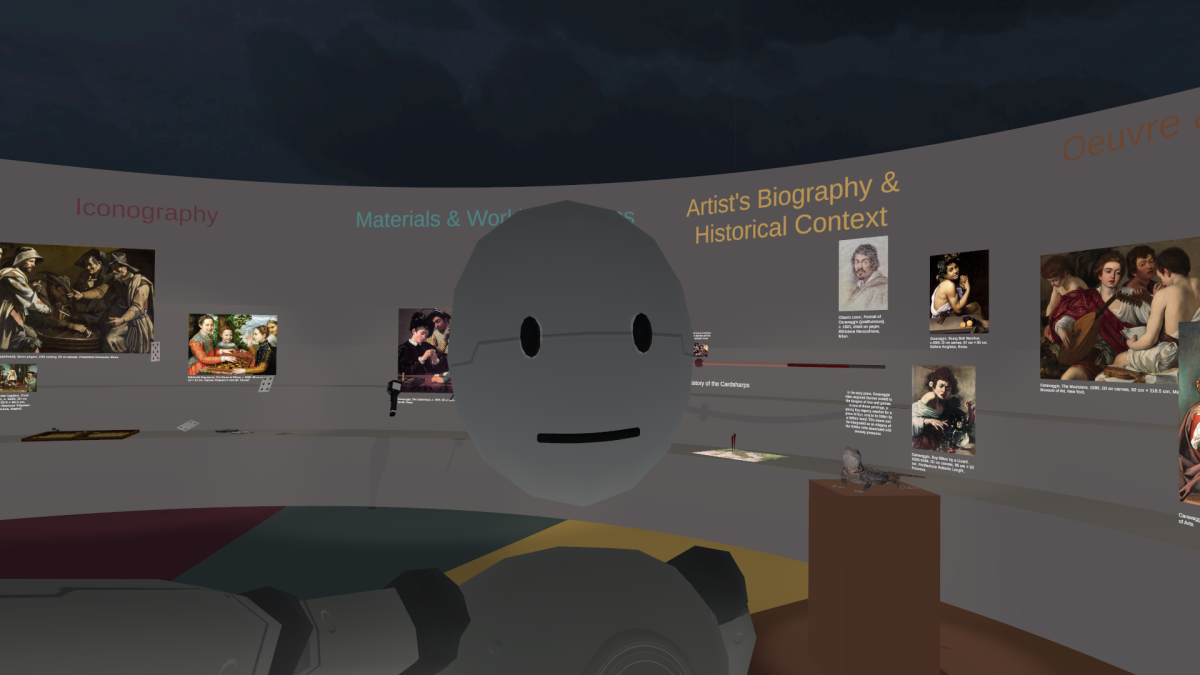
The ARTverse Space of Memory
The space of memory of the ARTverse project was designed using the painting The Cardsharps from Caravaggio as the topic for an example of an art history lecture. The painting depicts a gaming table where a young nobleman is being unwittingly cheated by two conspirators. The naive player is focused on his hand of cards, while across from him, a card sharper discreetly draws additional cards from behind his back. Behind the young man, an older accomplice peers over his shoulder, signaling his partner with a cheating gesture. The composition creates a contrast between innocence and cunning while the viewer is made an accomplice( see 5).

We used the Theater of Memory from Giulio Camillo as an inspiration for the virtual space. In a model of an amphitheatre we place the main painting on the stage in the center, reference paintings and objects related to 5 themes are positioned in the semicircle seating area:
- Iconography
In this section you will find objects and other paintings related to the symbols depicted in the artwork that is the subject of the lecture. In the case of The Cardsharps by Caravaggio, the user can see a model of the backgammon game shown in the lower left corner of the painting. The user can also see and interact with some of the cards. When held, the cards reveal additional information about the games played in Caravaggio's time.
- Materials and Work Process
This section displays the painting in its original size. The user can grab an infrared camera to look for infrared details in the painting, or grab a magnifying glass to look for details with information about Caravaggio's painting technique.
- Biography and Historical Context
In this section, the user can interact with a timeline that displays information about the painting over time. The user can also view a map showing the location of Caravaggio's birth and death.
- Oeuvre & Stylistics
Populated with other paintings from Caravaggio, this section showcases the style of the artists, presenting the themes that Caravaggio often explored related to the dangers of love and games. Interacting with an animated model of a lizard, the user can learn about an allegory of the hidden risks associated with sensory pleasures.
- Artistic & Cultural Legacy
The influence of Caravaggio's Cardsharps in the history of art is represented in this area, where users can see several paintings that use the same motif of game cheating and denunciatory gestures in paintings with the game theme. The users look for the gestures represented in the center of the room in the paintings and compare the different uses of them.
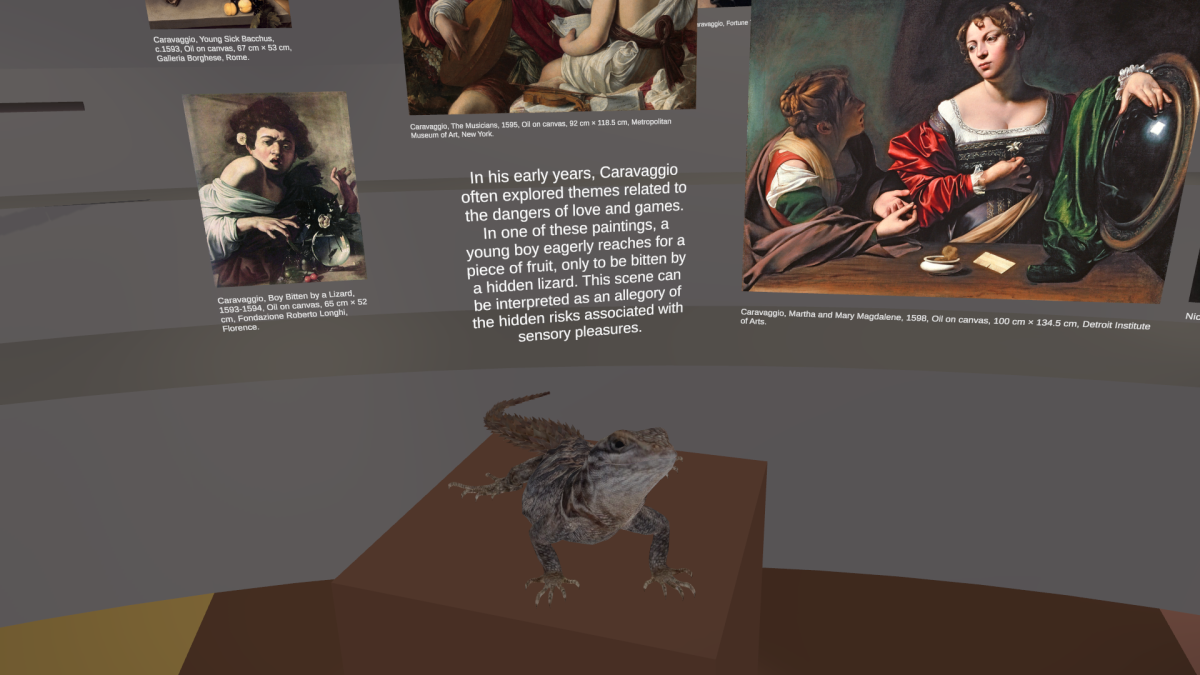
How to use(and reuse) ART_history_verse
The ARTverse VRChat World for art history is designed for an art history lecture in which the teacher should lead students through different spatially defined thematic areas to be revealed in a sequence. In the VRChat world there is a prepared space for a course on The Cardsharps by Caravaggio (You can visit the ARTverse VRChat World for art history teaching here).
In case the teacher wants to give a lecture on another topic, in the Git Repository of the project it is possible to download the Unity project of the VRChat space and adapt the project for lectures on other artworks and artists. In the project users will find 3d models to reuse and predefined scripts to reproduce the interaction methods used in the ARTverse project. For downloading images and pedagogical material we recommend the Europeana web portal for digitalized cultural heritage and the Sketchfab portal for 3d models.
Conclusion: a Structure to Organize a Lesson
The ARTverse teaching environment was not designed to be a self-explanatory environment or an automated art history course. It was designed as a template for art history teachers to organize their thoughts in a spatial way to create a more interactive teaching environment and to use the principles of memorization techniques to enhance the student learning process.
In our preliminary tests, the users enjoyed the playful and intuitive virtual space, customised for an art history lesson. They explored the space and interacted with the objects while getting more information about Caravaggio's painting, his life and techniques. This shows that immersive environments have a great potential for education and experiencing art, culture and history in a new and unique kind of way, by curating content around specific topics and offering additional dimensions to the user.


